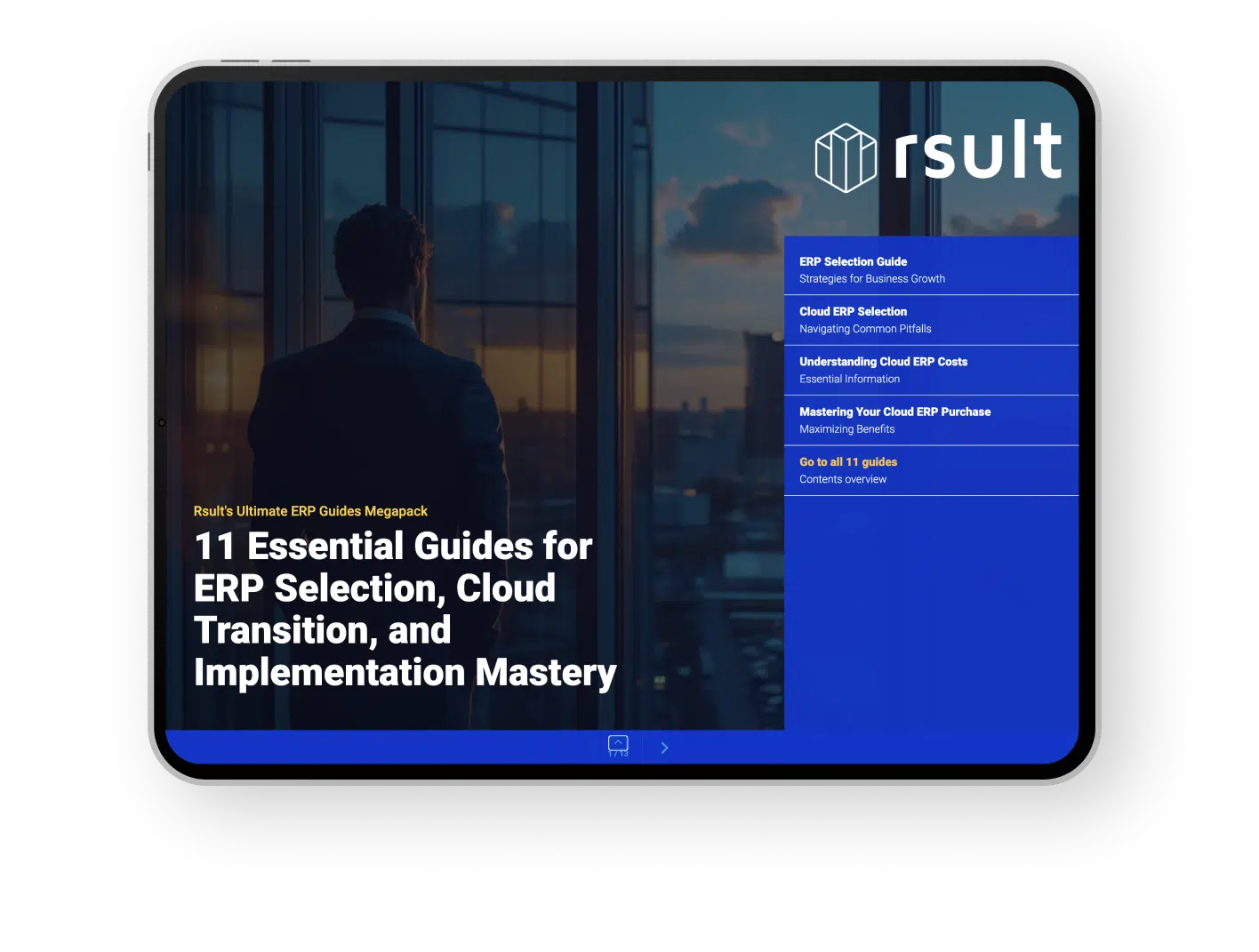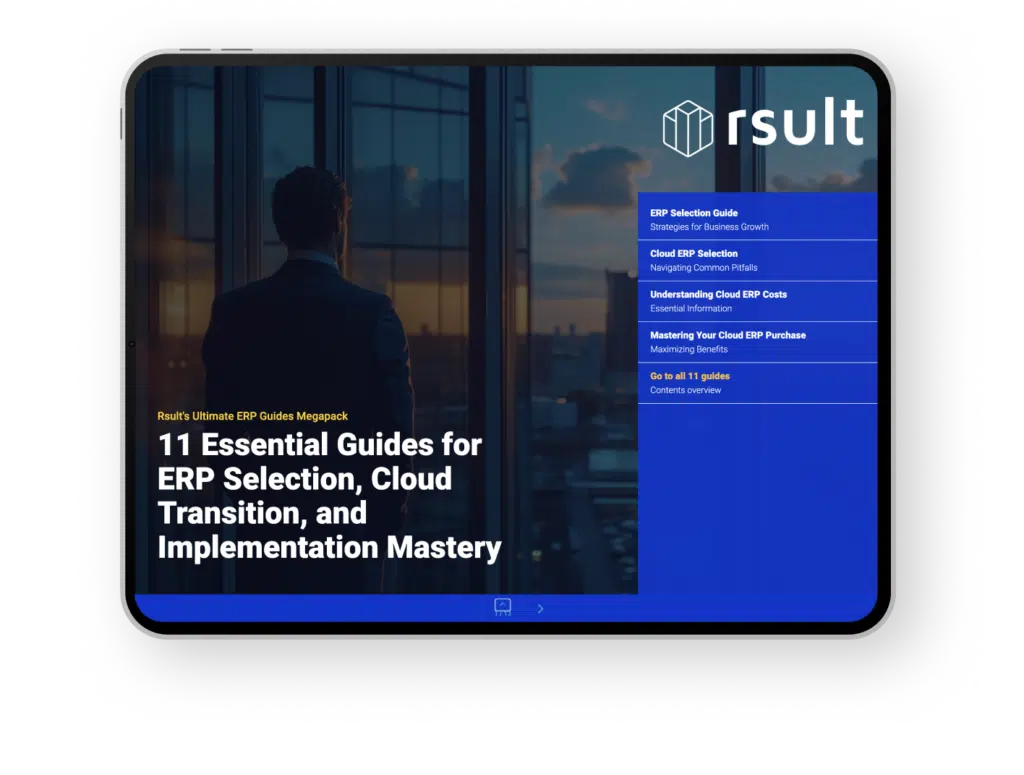Implementing ERP is more than a technological leap; it’s a strategic overhaul that touches every corner of an organization. The journey to successful ERP software integration intertwines technology with human engagement and methodical planning, turning complex challenges into opportunities for growth. Recognizing that ERP implementation challenges range from convincing stakeholders to adapting to new workflows, it’s critical to approach the rollout with a balanced mix of technical acumen and people focus. A commitment to ERP implementation success factors such as leadership backing, clear communication, and comprehensive training programs paves the path for a transformative and seamless technological transition.
Key Takeaways
- Commitment from top-level management streamlines the ERP rollout.
- Engagement and training equip teams for forthcoming changes and enhancements.
- Clarity in communication prevents misunderstanding and sustains momentum.
- Identifying goals and project scope aligns the ERP system with business objectives.
- Addressing user concerns proactively fosters a collaborative environment.
Understanding the Significance of ERP Implementation
As organizations seek to navigate the complexities of modern business environments, the implementation of a comprehensive ERP system becomes critical. A successful ERP system deployment is much more than introducing new software; it’s about fundamentally altering the way a company operates, providing the skeleton for all its processes and systems. By enacting ERP customization, companies tailor the system to align with unique business processes, thereby reinforcing operational coherence and efficiency.
The decision-making compass is significantly enhanced through the strategic utilization of ERP systems. ERP vendor selection is imperative and often dictates the level of alignment between the deployed system and the pre-existing business architecture. A carefully chosen ERP system weaves through the very fabric of an organization’s operations, emphasizing rigorous selection standards and conscientious vendor vetting.
- Optimizing company-wide communication and collaboration
- Consolidating information for enhanced decision-making
- Facilitating a seamless transition from outdated systems
Addressing potential bottlenecks during deployment requires astute planning and an acute awareness of organizational intricacies. From the initial phase of selecting an ERP solution tailored to the organization’s needs to implementing the system with minimal disruption, businesses must remain vigilant and adaptable, ensuring that growth and customer satisfaction are not compromised but rather improved.
| ERP Selection Criteria | Influence on Implementation |
|---|---|
| Vendor Expertise and Reliability | Directly impacts deployment success and system resilience |
| Customization Versatility | Ensures the system aligns with unique business needs, driving efficiency |
| Integration Capabilities | Aids in a smooth transition from legacy systems avoiding operational delays |
| Scalability | Accommodates growth without the need for system overhauls |
| User Experience | Increases system adoption and lowers resistance to change |
Executive Sponsorship: Steering ERP Success
When undertaking an ERP project management initiative, the significance of strong executive sponsorship cannot be overstated. These leaders are the cornerstone in driving an ERP implementation forward, ensuring it aligns with organizational strategies, and fosters a culture primed for change. Engagement from the top is one of the critical ERP implementation best practices that contribute significantly to the program’s overall success.
The Role of Leadership in Project Momentum
Leadership brings more to the table than just strategic decisions; they are essential for maintaining the momentum of ERP implementations. By setting the project direction and maintaining focus, executives ensure that ERP deployment does not falter amid operational challenges. Their visible support from the outset instills a sense of commitment throughout the organization.
Securing Resources for ERP Deployment
ERP project management entails the shrewd allocation of resources, and it falls to the executives to secure the necessary budget, personnel, and technical support. Leaders provide not only financial but also intellectual capital, safeguarding the ERP initiative against resource-related setbacks and securing the necessary input for a successful launch and sustenance.
Building a Culture of Adoption and Commitment
Fostering a culture that embraces new systems is a subtle art, one that demands a shared vision revolving around the ERP implementation best practices. Leadership serves as change agents who help frame the ERP’s value proposition, thereby facilitating an environment that is less resistant to change—a cultural shift that seeks, rather than shies away from, innovative solutions.
Assembling a High-Impact ERP Implementation Team
For businesses aiming to navigate the complex terrain of ERP implementation, establishing a high-impact team is a critical ERP implementation success factor. With a blend of seasoned professionals and dynamic individuals, an effective team serves as the backbone of a successful ERP project management strategy.
The secret to building such a team lies in the thoughtful selection of personnel, each bringing a diverse set of skills to the table, fostering a collaborative environment primed for innovative problem-solving and efficient ERP system execution.
Selecting Team Members with Cross-Functional Expertise
Forming a powerhouse ERP implementation team requires a deliberate focus on cross-functional expertise. Such a cadre possesses a deep understanding of respective departmental workflows, ensuring the ERP solution aligns with the nuanced needs of every business unit. Their combined insights are instrumental not only in tailoring the ERP system to company-specific requirements but also in mitigating potential pushback from various sectors, a cornerstone in achieving ERP implementation success.
Assigning Clear Roles and Responsibilities for Team Members
Once a multi-talented team is in place, defining clear roles and responsibilities becomes paramount. Each member’s tasks must be delineated to guarantee all elements of the ERP project management are expertly handled. The structure of roles ensures accountability and sets a clear trajectory for meeting ERP implementation milestones while staying within budget.
An effective team structure often features a diverse array of positions, each playing a vital role in driving the project forward. The executive sponsor champions the initiative, the ERP project manager oversees day-to-day operations, and the functional leaders ensure that their department’s needs and concerns are actively addressed.
| Team Member | Role | Responsibilities |
|---|---|---|
| Executive Sponsor | Leadership and Vision | Securing project funding, advocating for change, aligning the ERP system with business strategy. |
| ERP Project Manager | Project Oversight | Planning, execution, monitoring progress, managing budget and schedule. |
| Business Analyst | Requirement Analysis | Gathering business requirements, translating needs into technical specifications, supporting testing and validation. |
| IT Specialist | Technical Support | Ensuring system compatibility, aiding in data migration, addressing technical challenges. |
| Change Management Lead | Cultural Integration | Facilitating training, communicating benefits, easing the transition for end-users. |
| Quality Assurance | System Testing | Validating system functionality, ensuring compliance with specified requirements, managing feedback loops. |
By embracing these ERP implementation success factors and honing an adept ERP project management skill set within the team, organizations set the stage for a successful ERP rollout and future business scalability.
Implementing ERP with Clear Scope and Defined Goals
When embarking on ERP system deployment, a meticulously defined scope and clear objectives are the torchbearers that illuminate the path to success. They play a critical role in safeguarding the project from deviating into an undefined expanse, which can lead to increased costs and deployment delays. Charting the course with precision allows for refined resource allocation, better expectation management, and the establishment of realistic timelines that resonate with your organization’s strategic blueprint.
To ensure a straight-arrow progression toward ERP vendor selection and subsequent system rollout, it’s paramount to pinpoint the precise functionalities your company necessitates. This foresightedness not only sharpens the focus on mission-critical elements but also fosters an environment ripe for effective stakeholder communication. We aim to lay down the stepping-stones that guide the inherent complexities of ERP implementation into a streamlined and triumphant enterprise-wide integration.
- Detailed requirements analysis to spotlight pivotal ERP features.
- Prioritization of ERP functions aligned with core business processes.
- Transparent stakeholder dialogue to ensure aligned expectations.
- Strategic timelines that are both ambitious and attainable.
- Commitment to a readily accessible knowledge base during the deployment phase.
| ERP Deployment Phase | Goals | Expected Outcomes |
|---|---|---|
| Pre-Implementation Planning | Set tangible, strategic objectives | Clear direction and blueprint for deployment |
| Vendor Selection | Choosing a vendor with relevant industry experience | Partnership with a vendor that understands your business |
| Implementation | Execution according to defined scope | On-time, within-budget deployment with full feature integration |
| Post-Implementation Review | Garnering feedback and evaluating system performance | Identification of areas for improvement and additional training needs |
The carefully curated fusion of a definitive project trajectory and exacted goals creates the groundwork for an ERP implementation that not only meets but exceeds expectations. A precise and purposeful approach to the selection and implementation stages is instrumental for an ERP solution that is robust, scalable, and intrinsically aligned with your business imperatives.
ERP Project Management: The Key to Timely Delivery
Efficient and effective ERP project management is critical for ensuring ERP implementation best practices, and achieving a seamless ERP software integration. By paying close attention to structured project planning and target milestones, companies pave the way for achieving their desired outcomes on schedule.
Establishing a Structured Project Management Process
To drive the success of an ERP implementation, establishing a structured project management process is essential. This involves a comprehensive approach that begins with aligning with company goals and incorporating proven best practices. Crafting a detailed project plan that outlines the scope, allocates budget wisely, and sets realistic timelines is the foundation of this structured approach.
Key elements of a structured project management process include:
- Defining clear objectives aligned with business strategies.
- Regular risk assessments to anticipate and mitigate potential challenges.
- Implementing contingency plans to ensure project resilience.
- Holding consistent project status meetings to keep all stakeholders informed.
Tracking Performance Through Key Milestones
Measuring progress against key milestones is a critical step in managing an ERP project. It allows for the early detection of delays or discrepancies and enables timely corrective actions. Identifying significant deliverables and metrics for success ensures that the project’s performance is appropriately tracked and assessed.
Performance tracking usually includes:
- Monitoring and reporting on project phase completions.
- Evaluating adherence to project timelines and budgets.
- Assessing the quality and effectiveness of the ERP software integration.
- Reviewing team performance and facilitating a learning environment for continuous improvement.
Implementing ERP best practices and maintaining a robust ERP software integration strategy are the keystones for ensuring ERP projects are delivered on time and within scope. With careful planning and diligent tracking, organizations can navigate the complexities of ERP integration, achieving streamlined operations and improved business performance.
Effective Change Management: The Human Aspect of ERP
Delving into the human aspect of ERP reveals a landscape filled with ERP implementation challenges that are frequently underacknowledged. At the heart of these challenges lies the need for ERP customization to fit unique business processes and support user adoption. An effective change management strategy, therefore, goes beyond technical adjustments and targets the human elements – the staff who will interact with the new system daily.
Change management is a balancing act that looks to align business procedures and employee comfort. It emphasizes a model where ERP customization acts as a bridge between the system’s capabilities and the employee’s ease of use. This synergy can only be achieved through a thorough understanding of the workforce’s needs, cultural norms, and preferred working styles. When these elements are accommodated, the adoption curve is less steep, and the transformation process respects the natural pace of the workplace.
Communication is the lifeblood of any change initiative. A communicative approach that is clear, consistent, and empathetic can significantly reduce the stress associated with adoption. It is crucial, then, to tailor the communication and provide various levels of support. Workshops, tutorials, and one-on-one sessions all play a role in fostering a supportive environment that mitigates the ERP implementation challenges.
- Assess the current processes that will be impacted by ERP integration.
- Engage with employees to understand their daily work routines and expectations.
- Develop an inclusive communication strategy that informs, educates, and welcomes feedback.
- Provide tailored training that aligns with employee roles and the extent of change they will encounter.
- Set up ongoing support systems post-implementation for continuous guidance and improvement.
An understanding of these factors is key to tailoring an ERP solution that is both effective and sensitive to the human aspects of a business. To visually represent the process of integrating ERP, we can inspect the interactions between ERP customization and the associated human considerations.
| Human Consideration | ERP Customization Requirement | Solution |
|---|---|---|
| Resistance to Change | User-friendly Interface | Intuitive design and personalization options |
| Need for Role-Based Access | Flexible Permissions | Highly configurable access controls |
| Variable Technological Proficiency | Adaptive Training Materials | Multi-tiered training programs |
| Diverse Business Processes | Modular Functionality | Custom modules & workflows |
In conclusion, the fabric of an organization’s culture is as crucial as the software it chooses. Addressing both with equal fervor through a meticulous change management plan ultimately dictates the difference between a begrudging adoption and a transformational shift that positions an organization on the zenith of efficiency and innovation.
Ensuring Effective Communication Throughout Implementation
At the heart of a successful ERP software integration lies effective communication, a critical ERP implementation success factor. From the very start, clear and continuous dialogue sets the stage for a transparent exchange of ideas, expectations, and progress reports. This proactive engagement helps in cementing the foundation for the system’s eventual integration and acceptance across the organization. Communicating strategically not only informs but also involves stakeholders in a way that fosters trust and commitment to the project’s success.
Engaging Stakeholders with Regular Updates
Keeping stakeholders informed throughout the ERP implementation process is essential. Businesses that succeed in ERP software integration understand the value of keeping every stakeholder in the loop. Regular updates can preemptively address queries and concerns, thereby smoothing out potential bumps in the road to implementation. These updates could be in the form of newsletters, project dashboards, or scheduled meetings, ensuring that every team member is aware of milestones achieved and the challenges ahead.
Handling Feedback and Resolving Adoption Barriers
Feedback is a treasure trove of insights, especially during complex transitions such as an ERP implementation. Encouraging stakeholders to share their input can uncover hidden adoption barriers and provide opportunities to fine-tune strategies for successful ERP software integration. Soliciting this feedback should be seen as an ongoing process, vital for refining workflows, improving system configurations, and ensuring that the ERP platform aligns with real-world business needs.
- Facilitate open forums for stakeholders to discuss the ERP implementation process.
- Develop a dedicated communication channel to gather feedback efficiently.
- Organize hands-on workshops to boost familiarity with the new ERP system.
By transparently addressing concerns and efficiently resolving adoption barriers, teams can maintain momentum towards ERP implementation success. Stakeholders feel valued and part of the process when they observe their contributions leading to tangible improvements. This collective progress further validates the investment in ERP software integration, highlighting its role as a catalyst for organizational efficiency and growth.
Preparing for Data Migration: Handling Data with Care
Data migration stands as one of the most critical phases in ERP system deployment, demanding meticulous attention to detail and robust planning. Understanding the value of data as the lifeblood of an organization, ERP implementation best practices advise against a rush to migrate without a clear strategy. The process must be rooted in ensuring the integrity and usability of the data once integrated into the new system.
Deciding What Data to Migrate: A Strategy
Deciding on the scope of data to migrate entails a strategic evaluation of information utility, relevancy, and compliance. Leaders must engage with key departments to determine which data sets are essential to operations and the future state of business analytics. An inclusive approach to this decision-making process not only harnesses collective insight but also rallies departmental support for the impending change, fostering smoother transitions and a unified methodology that aligns with ERP implementation best practices.
Cleaning and Structuring Data for a Fresh Start
Cleaning and structuring data is unquestionably as important as the data selection process itself. Removing obsolete and redundant data ensures optimization of the new ERP platform, while attention to data format and consistency guards against potential system errors post-migration. A diligent cleansing process, conducted with an eye for detail, ensures that the foundation upon which your ERP system deployment is built is solid and reliable, setting a precedent for cleaner data management practices in the future. By handling data with painstaking care, companies can rest assured that their ERP systems will deliver on the promise of streamlined processes and incisive business intelligence.






